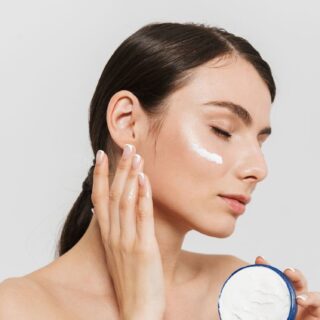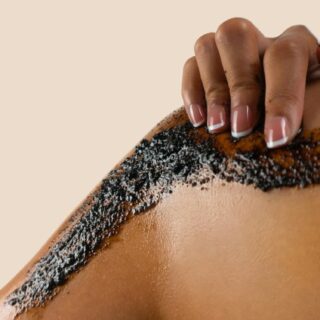When you look for the best skincare routine, you likely want fast, trustworthy tips that lead to real results. You might feel bombarded with countless products and steps, unsure of the best way to layer them or which elements truly matter. You’re certainly not alone—many people are eager for a clear guide that fits seamlessly into daily life, delivering genuine, long-lasting skin benefits. Fortunately, you can streamline the process once you understand your skin type, set consistent habits, and follow an order of application that truly works.
Below, you’ll find a simple yet powerful approach, drawing on insights often highlighted by reputable skincare brands and blogs. By tailoring products, adjusting for day and night, and remaining patient as your skin evolves, you set yourself up for a glowing complexion. Get ready to discover the step-by-step formula that can transform your skincare routine for the better.
Understand Your Skin Type
Before jumping headfirst into your daily regimen, you want to get in tune with your skin’s natural characteristics. Identifying whether you have oily, dry, combination, sensitive, or normal skin helps you determine which ingredients can address your specific concerns.
- Oily Skin: You might notice a sheen on your face, enlarged pores, and the occasional breakout. Choosing lightweight, oil-free products can help prevent clogged pores and keep excess shine at bay.
- Dry Skin: Tightness, flakiness, and rough patches often accompany this skin type. Look for richer, hydrating formulas with ingredients like hyaluronic acid or ceramides.
- Combination Skin: This type falls between oily and dry. Perhaps your T-zone (forehead, nose, and chin) appears oily while your cheeks feel relatively normal or dry. Products that balance moisture without creating excess oil often do wonders here.
- Sensitive Skin: You may experience irritation, redness, or inflammation when introducing new products. It’s crucial to look for gentle formulations and patch test before committing to regular use.
- Normal Skin: Your complexion generally feels balanced, with minimal dryness or oiliness. Even so, you still want to protect it and maintain long-term health by choosing products with nourishing and protective qualities.
By clarifying your skin type, you set a strong foundation for every choice to follow. You’ll know which ingredients work for you, which should be used sparingly, and which steps to emphasize for the best possible outcome.
Step 1: Gentle Cleansing
Every effective skincare routine starts with a thorough yet gentle cleanse. According to many leading skincare professionals—mirroring the structure you often see in competitor sources—this is non-negotiable because you want to remove daily buildup, excess oil, and impurities that can clog pores. You also want to avoid harsh cleansers that strip your skin’s natural barrier.
Look for products labeled “gentle” or “pH-balanced.” If you have oily or acne-prone skin, a foam or gel cleanser works well to handle excess oil. If dryness or sensitivity troubles you, aim for a cream cleanser with calming agents like chamomile or aloe.
Massage the product into damp skin for about 30 seconds to a minute, then rinse with lukewarm water (extreme temperatures can aggravate your complexion). Pat your face dry with a soft towel. This simple practice clears the path for every subsequent product to absorb better and work more effectively.
Step 2: Toning for Balance
After cleansing, a toner helps rebalance your skin and prepares it for active ingredients that follow. Toners were once known for their harsh, alcohol-heavy formulas, but newer versions are gentle and often packed with beneficial ingredients like antioxidants or soothing botanicals.
When you apply a toner, you’re resetting your skin’s pH level and wiping away any lingering debris the cleanser might have missed. You also increase the penetration of serums or moisturizers that follow. Simply pour a bit of toner onto a cotton pad or place a few drops in your palm, gently patting it over your face. Focus on problem areas like the T-zone if needed.
If your skin type is on the drier side, choose a moisturizing toner that includes ingredients such as hyaluronic acid or rose water. If your skin feels oily or congested, try a toner with mild exfoliating properties, such as salicylic acid, to keep pores clear.
Step 3: Targeted Treatments (Serums and Eye Cream)
Once your skin is cleansed and balanced, you’re ready for the real power players: targeted treatments. Following the order used by many reputable skincare guides—such as the emphasis on layering in competitor 1 and the specific steps provided by competitor 2—serums and eye creams come next because they penetrate deeply and deliver concentrated actives.
- Serums: These are concentrated formulations designed to address issues like hyperpigmentation, fine lines, or inflammation. For instance, if dullness is your main concern, a vitamin C serum can brighten your complexion over time. If hydration is lacking, a serum containing hyaluronic acid can boost moisture retention. Press the serum gently into your skin, giving it a moment to absorb.
- Eye Cream: The skin around your eyes is thinner and more prone to dryness. A specially formulated eye cream helps reduce puffiness, dark circles, and fine lines. Use your ring finger to lightly tap the product around your orbital bone, taking care not to tug at this delicate area.
Incorporating targeted treatments consistently can lead to noticeable improvements in your skin’s texture and overall tone. Remember, a little goes a long way, so you don’t need to overapply.
Step 4: Essential Moisturizing
No matter your skin type, moisturization is vital. This step locks in the benefits of the treatments you just applied and reinforces your skin’s protective barrier. For dry or sensitive skin, a cream-based moisturizer with hydrating ingredients like ceramides, squalane, or shea butter can be a game-changer. Oily or combination skin may benefit from a gel-based or lightweight lotion to maintain balance without contributing excess oil.
When applying moisturizer, gently massage it into your face and neck in upward, circular motions. This practice can boost circulation and help your skin appear firmer. Take an extra moment to ensure you don’t neglect areas prone to dryness, such as around the nose or along the jawline.
Step 5: Shielding with SPF
You want to protect your skin from harmful UV rays and the premature aging they cause. A broad-spectrum sunscreen with at least SPF 30 is essential for daytime use. While you might think sun protection is only necessary when you plan on being outdoors, your skin can still suffer from incidental sun exposure during daily errands or even near sunny windows.
Choose a sunscreen that suits your skin type. Mineral-based sunscreens with zinc oxide or titanium dioxide are gentle and often recommended for sensitive or acne-prone skin. Chemical sunscreens absorb UV rays effectively but may irritate very sensitive complexions. Apply sunscreen liberally as the final step of your morning routine, giving it time to settle. Think of sunscreen as your daily shield against environmental stressors that can undo all your skincare efforts.
The Importance of Exfoliation
Exfoliation removes dead skin cells that accumulate on the surface, helping your complexion look brighter and feel smoother. However, exfoliating too often can weaken your skin’s barrier, leading to redness and irritation. Striking a balance is crucial: for most skin types, one to three times per week is enough.
- Chemical Exfoliants: Products containing alpha hydroxy acids (AHAs) like glycolic or lactic acid are excellent for brightening, while beta hydroxy acids (BHAs) like salicylic acid tackle clogged pores.
- Physical Exfoliants: These use small grains or particles to slough away dead skin. Be gentle; over-scrubbing can do more harm than good.
Incorporate exfoliation after cleansing but before toning, or use a dedicated exfoliating toner instead. This step speeds up cell turnover, allowing your serums and moisturizers to work more effectively.
Nighttime Nourishment
Your nightly routine doesn’t have to be drastically different, but nighttime is prime time for skin repair. The regeneration process ramps up while you sleep, so adjusting your routine to support healing can boost your results.
- Double Cleansing (optional): If you wear makeup or sunscreen, consider a gentle oil-based cleanser first, followed by a water-based cleanser.
- Treatment Products: Nighttime is often best for more potent ingredients like retinol or certain acids. Make sure to follow manufacturer guidelines and introduce strong actives gradually to minimize irritation.
- Richer Moisturizer or Night Cream: Thicker night creams help replenish moisture lost during the day. Look for ingredients like peptides or niacinamide to support firmness and even tone.
This extra care while you sleep can be a major step toward ensuring you wake up to a refreshed, radiant appearance.
Consistency and Patience
While you may see quick improvements, real transformation often takes time. New cells need weeks to surface, and consistent care is your path to ongoing progress. Resist the temptation to switch products too frequently. If you’re trying a new serum or retinol, give your skin at least a few weeks to adjust unless you notice signs of irritation such as severe dryness, persistent redness, or painful breakouts.
Another key to success is maintaining a healthy lifestyle. Drinking enough water, getting quality sleep, and balancing your diet all contribute to your skin’s overall health. Your routine doesn’t stop at products alone—you support healthy skin from the inside out.
Finding a Routine That Fits You
You want a routine you can maintain, not a chore that feels overwhelming. If you’re short on time, focus on the essentials: cleansing, treating with targeted serums, moisturizing, and protecting with SPF. Then, on days when you have extra time, incorporate more detailed steps like exfoliation or a hydrating face mask.
When you tailor your regimen to your lifestyle, it’s easier to remain motivated. Many skincare enthusiasts find joy in the ritual itself—it’s an act of self-care that goes beyond mere product application. By staying consistent, you teach your skin to thrive under a steady, nurturing routine.
Maintaining Progress and Evolving
Remember that your skin’s needs can change due to factors such as stress levels, climate changes, or even hormonal fluctuations. If you notice dryness creeping in during winter months, you might switch to richer moisturizers. Warmer seasons might call for lighter formulations.
Feel free to reevaluate your routine every few months to determine which products continue to serve you and which might need a break. By staying attentive to how your skin responds, you’ll keep it in prime condition year-round.
Your Radiant Conclusion
Finding and following the best skincare routine doesn’t have to be daunting. You can build a rock-solid regimen by first knowing your skin type, then layering your products in an order that ensures maximum benefits. Cleanse gently, tone for balance, and introduce targeted treatments like serums or eye creams for specific issues. Seal everything in with the right moisturizer, shield with SPF each morning, and consider exfoliating wisely to maintain skin cell turnover.
Over time, you’ll notice calmer, brighter, and more resilient skin—proof that consistency pays off. Even the busiest schedule can accommodate a streamlined system if you commit to making skincare a priority. After all, caring for your complexion is an ongoing act of self-love and confidence-building. By following these principles and adjusting as you go, you’ll experience the healthy glow you deserve. Embrace the routine and enjoy the journey toward your most radiant self.


